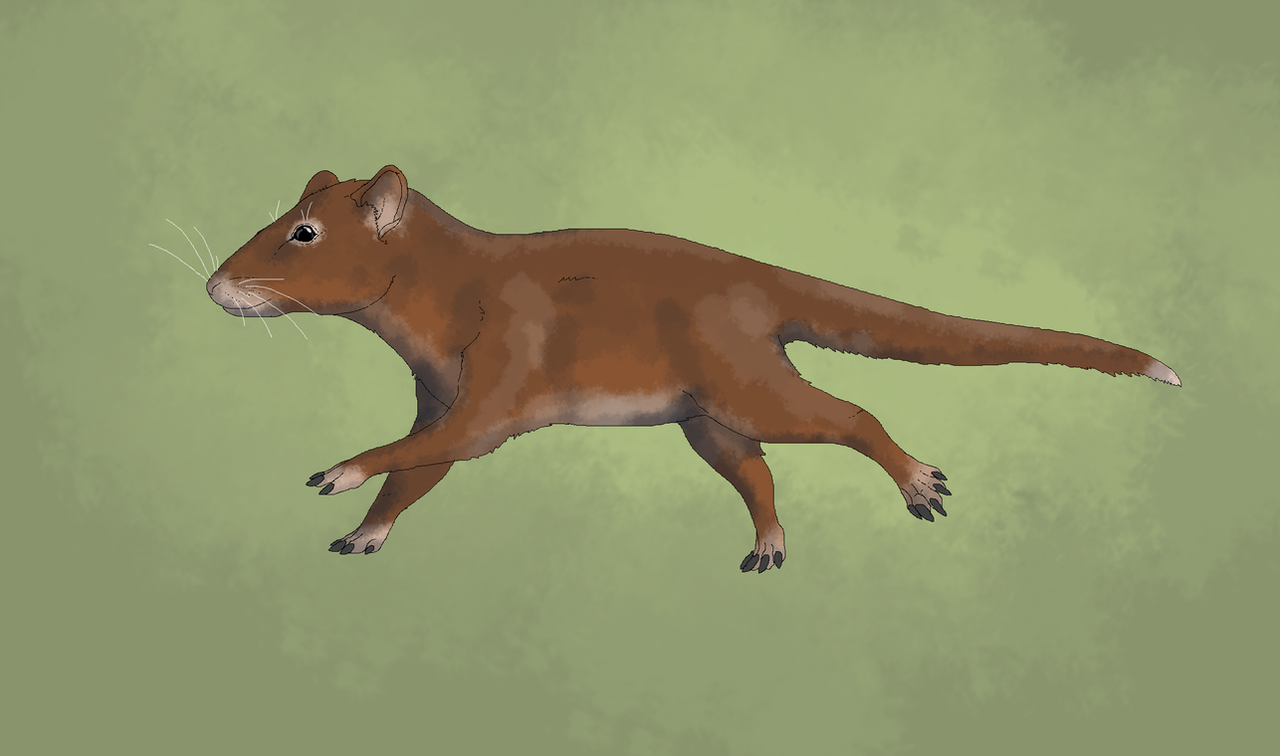HOME | DD
 DrPolaris — Myocervulus germanicus
DrPolaris — Myocervulus germanicus

#animal #herbivore #mammal #speculativefiction #speculativeevolution #speculativezoology
Published: 2020-07-08 23:51:51 +0000 UTC; Views: 8441; Favourites: 120; Downloads: 10
Redirect to original
Description
The end of the Eocene saw a massive influx of Asian immigrant taxa flooding into Europe. On the whole, most of Europe's indigenous animals vanished at the Eocene-Oligocene boundary, either due to a changing climate or new competition. An interesting example of such an event was the arrival of Asian derived Zhelestans in Europe during the Early Oligocene. During the Paleogene, a basal Zhelestan family was native to Europe: the Riccomidontids. Known mostly from teeth and partial jawbones, these small omnivores abruptly disappear from the fossil record during the latest Eocene. This coincides with the first appearance of the derived Asian Hervetotheriidae, in particular the widespread genus Myocervulus. Known from Late Eocene and Oligocene sites in Kazakhstan, Bulgaria, Germany and France, this 40cm long mammal was clearly successful and long lived. Up to 8 species have been named. Multiple specimens have been described and have given palaeontologists a decent idea of the animal's overall form. Roughly the size of a large rat, Myocervulus was nocturnal and possessed molars with tall crowns adapted for shredding vegetation. Although it's diet would have consisted mostly of plant matter, the large canines suggest that Myocervulus may have also fed on insects and small vertebrates on occasion. The limbs were somewhat elongated and the pedal claws were blunt. These adaptations enabled the genus to live in a wide variety of environments, from closed forests to more open wooded savanna. Indeed, along with the Glirungulate Cimolestans, the Zhelestans were the most common mammalian herbivores of the Oligocene and Early Miocene, essentially replacing the larger Multituberculates across Eurasia.Related content
Comments: 13

👍: 1 ⏩: 1

👍: 0 ⏩: 0

👍: 2 ⏩: 0

It looks like a small version of a capybara with a lomg tail.Speaking of mammals,i wonder what are glires and other eutherians/metatherians up to ....
👍: 1 ⏩: 2

👍: 1 ⏩: 0

👍: 0 ⏩: 0

Huh, what a cute little boi....almost looks like a hoofed carnivore. Either way, it seems the Asian mammals are displacing the European “endemics”(despite the fact most of those “endemics” are actually immigrants from North America of the Eocene) much like their Dinosaurian counterparts.
👍: 2 ⏩: 1

👍: 1 ⏩: 1

Well you certainly succeeded!
👍: 1 ⏩: 0
























